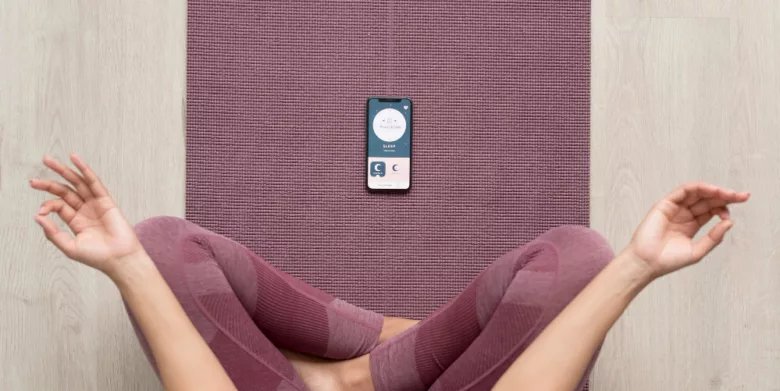Anger, anxiety, irritation, uncertainty, and frustration…Is there a magic pill to get rid of these destroying emotions? And while some people hope for the power of contemporary medicines, others are searching for promising alternatives. Timely psychological help can prevent people from mental disorders, such as depression, obsessive-compulsive disorders, neurosis, and others. And one of the prospective ways to improve emotional state lies in the field of developed self-regulation skills. To boost these skills people can through growing their psychological literacy and practice improving mindfulness and tracking thought patterns. That explains why the specific programs honed for leveraging self-management are in demand. And if you feel intrigued about how to create a meditation app, the overview gathered by the Purrweb team will come in handy. Take onboard the recommendations from experts, and start your own research in the niche.

Why does a meditation app promise to be a profitable business for a startup founder?
It has been estimated that the share of people with mental health disorders is about 13% of the global population. Impressive global statistics on the consumption of antidepressants reflect that the problem is increasing. And a significant share of people prefer to improve their psychological state not with medications but with meditation, or they try to combine these two methods. The analysts predict that the yield of the meditation apps sector will reach $4.64 bn in 2023. The annual growth is expected around 11%. The most favorable location in terms of profitability is North America: it generates about ¼ of global earnings in the field.
Who are among the leaders?
As you can suggest, such an attractive niche can be in a void. The major share of the meditation app market belongs to Headspace and Calm.
Planning your own solution, you can meticulously explore their features, strategy, and client’s reviews in order to see what can be eliminated and what to get rid of.
Headspace – meditation app targeted at guiding mindfulness sessions with multi language support. Last year the platform generated $610 million in revenue being downloaded 65 million times!
Calm started to conquer the market ten years ago. The UK based startup claimed about $100 million per year.
Five steps to create a meditation app
Like a gardener prepares his garden for flourishing, the entrepreneur prepares his project for thriving, exploring competitors, and looking for hidden advantages of the idea. When you have a tangible image of your future product and can answer what it can offer, for whom, and why people will be ready to refuse alternatives, catch the tide to reach “the coast” on time. There are only three steps that lie between you and your ambitious plans.
- Find a trustworthy partner
Since the fortune of a meditation app is in direct ratio from competencies of the team you work with, don’t neglect examining their portfolio, reviews and professional ambitions.
- Create prototype of the product
That means a visualization of the idea: UI/UX design team will draw a clickable prototype, so that you can assess its look and comfort from navigation, demonstrate to potential investors and test with users.
- Turn prototype into a working MVP
At this step you can earn your first money and reinvest them into further development.
MVP is a ready for exploiting product. The only distinction from a fully functional version is the limited set of features. But the features are completed perfectly.
- Analyze feedback
The main benefit of a performed product is an opportunity to interact with real users and research their likes and dislikes “in the field”.
- Attract additional investment and scale the product
When you’ve launched a product, the investors see the solemnity of your plans and more likely will perceive your pitch with better attention.

Which functionality to consider for a meditation app?
This is a tricky task: to combine uniqueness and familiarity in one product. Come up for the non-trivial functionality that can be included in the list. But regardless of the other things, there’s a “classical set of features” that users expect to see in any app of that type.
Sign up / Sign in page
This is a door into the inner world of the app. Make it simple and inviting: too many details and requirements can serve as “angry dogs” at the threshold. Make sure that the visitors can register just in several clicks, otherwise you’re at risk to lose them. There’s enough E-mail or telephone number to be login and a password paired with acceptance of The platform’s rules to become a participant of the app’s community.
Personal profile
The internal space in the app where the user can introduce himself and gather the information that one is interested in. If you’re going to create a meditation app with a networking functionality, oversee friends’ list and messaging features.
Meditation library
The precious part of a meditation app is a treasury of video lessons and training courses. To provide effortless navigation in this diversity, you can equip users with a search bar and filters or to organize content in the thematic groups: overcoming specific fears (arachnophobia, aerophobia, mysophobia etc.), coping with stress, calming and relaxation, tuning for productivity or, vise versa, preparation for deep sleeping.
Inviting celebrities for preparation of the guided sessions, you can facilitate the service’s fame: well known guides can entice users and attract more visitors.
Settings and Navigation tools
Let users enjoy their meditation process: give them simple and clear equipment for this!
The opportunity to choose sessions with actual longitude, type of voice, and other personal preferences and be able to stop/rewind lessons will add scores to the product.
Individual progress tracking
People like measurable results, so let them see graphics with their achievements. Such a visualization of the progress can serve as leverage for motivation and engagement. Think of the special rewards for the most disciplined users who return to the app on a daily basis and complete the entire meditation program.
Push notifications
Regular practice is the guarantee of incorporating healthy habits and achieving results. Moreover, the app can accompany the user’s daily routine with inspiring messages. And the reminders let the participants stay tuned.
Payments services
If you aren’t planning a benevolent project, oversee the convenient tools for in-app purchases/subscriptions. By interviewing your target audience you can find out which payment services are preferred and implement them in the solution.
Which is the average budget for performing a meditation app?
The answer will depend on various factors: the project’s complexity and your contractor’s location and qualification. So, the same product can cost two-three times more expensive if it’s designed in the US than in Eastern Europe, and one and a half cheaper in Southern-Eastern Asia. This fact makes offshore outsourcing to be a sought-after service. For example, at Purrweb the cost of a full cycle of work for creating an app like HeadSpace will equal approximately $60,000. Make your own research on the market, read blogs and reviews, and try to select the agency that’s on the same vibe as you. Any enormous enterprise starts with a bit of courage and the first step.




Leave a Reply